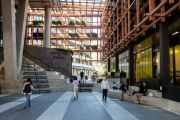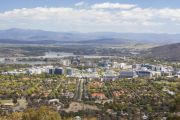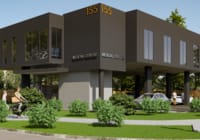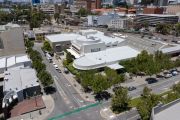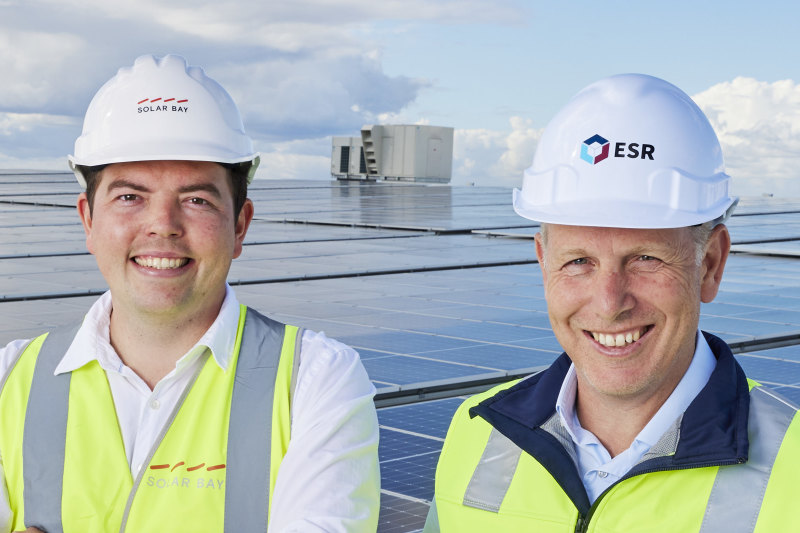
$500m solar deal to cut warehouse energy bills by half
A $500 million plan to turn hundreds of hectares of rooftop warehouse space into solar farms could cut industrial occupiers’ energy bills by half, according to industrial property giant ESR and renewable energy specialist Solar Bay.
The two companies have partnered on an ambitious rollout of renewable energy facilities across ESR’s industrial estates. Over the next decade, they hope to generate 50 megawatts of solar power (through the installation of 125,000 solar panels) and 300 megawatt hours of battery storage, as well as deliver electric vehicle charging infrastructure.
Once completed, it is expected to remove 56,000 tonnes of carbon dioxide a year from warehouse users’ operations.

“The price of energy is very volatile,” ESR Australia chief executive Phil Pearce told The Australian Financial Review.
“We’re noticing big spikes in energy costs as occupiers roll off locked-in contracts. That’s where we can come in and offer energy at a significant discount.”
By working closely with customers on bespoke energy solutions, the aim was to deliver savings of up to 50 per cent on energy bills generated from traditional retail providers, Mr Pearce said.
With their large, flat roofs, warehouses are well suited to hosting large solar panel installations. ESR’s portfolio comprises 410 hectares of existing estates and a 230-hectare development pipeline. Across both, there are about 500 hectares of built form implying a similar amount of warehouse rooftop space.
Last year Solar Bay, which is backed by a consortium of family offices, partnered with industrial investor Logos on the installation of Australia’s largest rooftop solar system at the intermodal logistics facility in Moorebank.
It will fund the majority of the initial rollout of renewable energy facilities across the ESR portfolio. Fifteen projects are already at “various stages of investigation”.
As the program scales up, Mr Pearce said ESR would increase its investment in the partnership to about 50 per cent, with the potential for some of its big capital partners (including the likes of GIC) to jump on board as well.
A new company will be established by ESR and Solar Bay to sell energy generated from these facilities back to warehouse occupiers.
Mr Pearce said much of the initial rollout will be across ESR’s new developments, and warehouses that have been recently completed.
“The easiest place to start is new developments. As we plan these we can get Solar Bay involved at the design phase so as not having to go back and retrofit,” he said.
The partnership will look at opportunities to retrofit assets across ESR’s existing portfolio with a focus on those occupiers with higher energy usage and costs.
Solar Bay director and co-founder James Doyle said the multiyear partnership allowed the firm to maximise renewable energy penetration across ESR’s development pipeline by implementing innovative electrification solutions like embedded networks during the build stage.
“This partnership is proof of the rapid increase in demand for green energy solutions,” Mr Doyle said.
Alongside delivering cheaper energy to its warehouse users, Mr Pearce said the partnership with Solar Bay would expand ESR’s sustainability footprint while future-proofing its assets to ensure the continued viability of its operations and those of its customers.
“This project will take time. It’s not a matter of clicking your fingers and it’s done,” Mr Pearce said.
“But its about us getting ready for the future as power usage intensifies. As vehicle fleets change to electric and there is more use of automation, that is where the real opportunity will emerge [from investing in cheaper renewable energy].”


